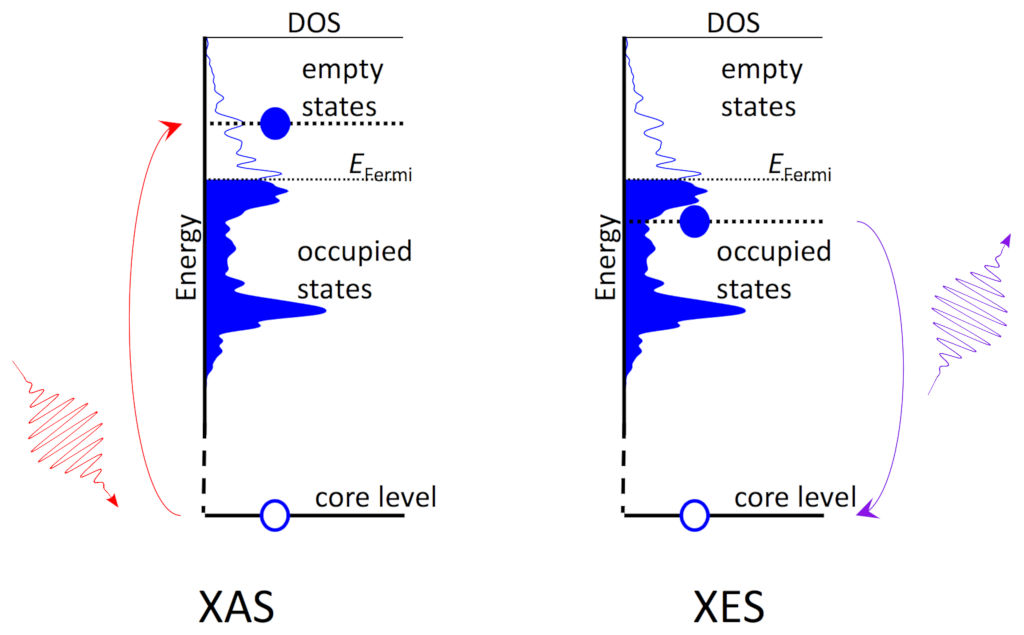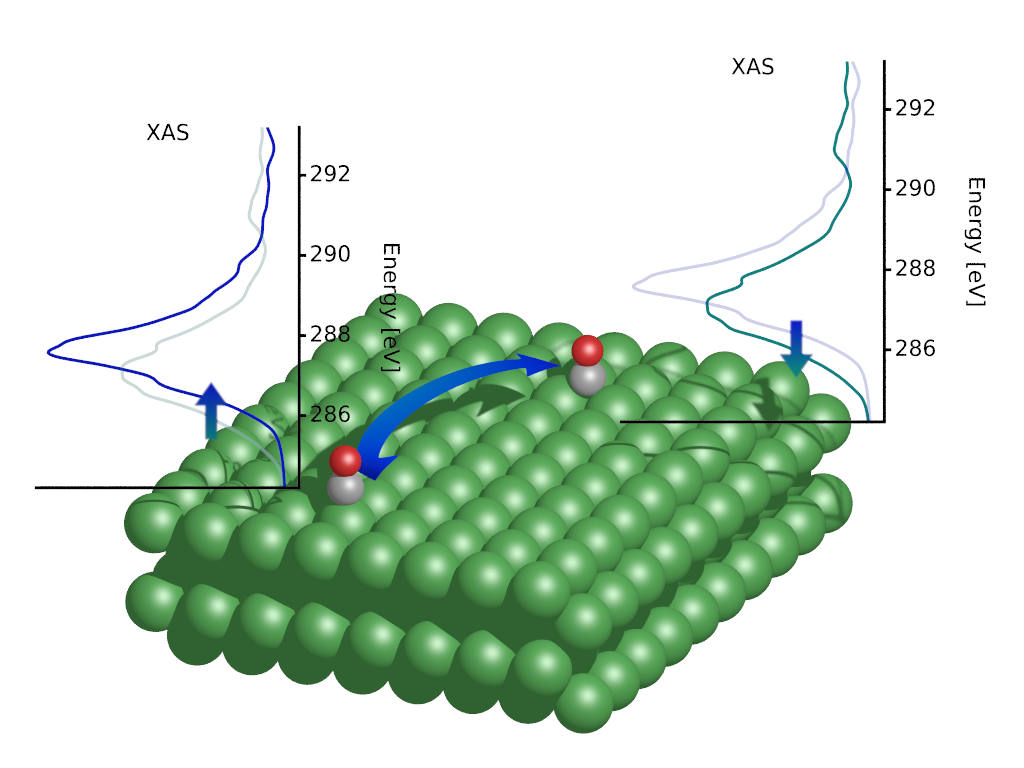Gaining a fundamental understanding of catalyst activity and in particular of selectivity beyond simple thermodynamic pictures requires the ability to distinguish competing mechanisms and kinetics of different active sites of a heterogeneous catalyst. Short-lived intermediates in these catalytic reactions are hard to study experimentally due to the rare occurrence of such states. The populations can be significantly enhanced with ultrashort optical laser pump pulses. Ultrashort X-ray laser pulses can then probe time-resolved the surface and adsorbate electronic structure via core-level spectroscopy.

We simulate X-ray emission and absorption spectra (XES and XAS) to guide analysis and interpretation of these ultrafast surface chemistry experiments. Such simulations are crucial to identify the observed electronic and structural configurations. Experimentally observed shifts in absorption onsets and broadening and shifts in absorption and emission peaks can be compared to simulated shifts and broadening due to structural rearrangement including bond breaking and formation, temperature changes, electronic excitations, etc.

To benchmark the accuracy of semi-local DFT employing frozen core-hole pseudopotentials to model the core excitations, we have compared simulated XAS spectra for CO/Ni(100) to experiments with different static (i.e. not only intermittently visited) adsorption sites induced by co-adsorbates and different CO coverages (see figure below to the left). The simulated spectra compare well to the measured ones (figure below to the right), showing how useful the core-hole pseudopotential approach is for identifying different adsorption sites on transition metal surfaces [Diesen, Rodrigues, Luntz, Abild-Pedersen, Pettersson, and Voss, AIP Advances 10, 115014 (2020)], and enabling the discrimination of ultrashort-lived intermediates, too.

Using these simulated spectral changes we help guide the analysis of the experiments by the group in the Ultrafast Catalysis FWP led by T. Heinz and the group led by A. Nilsson, respectively.